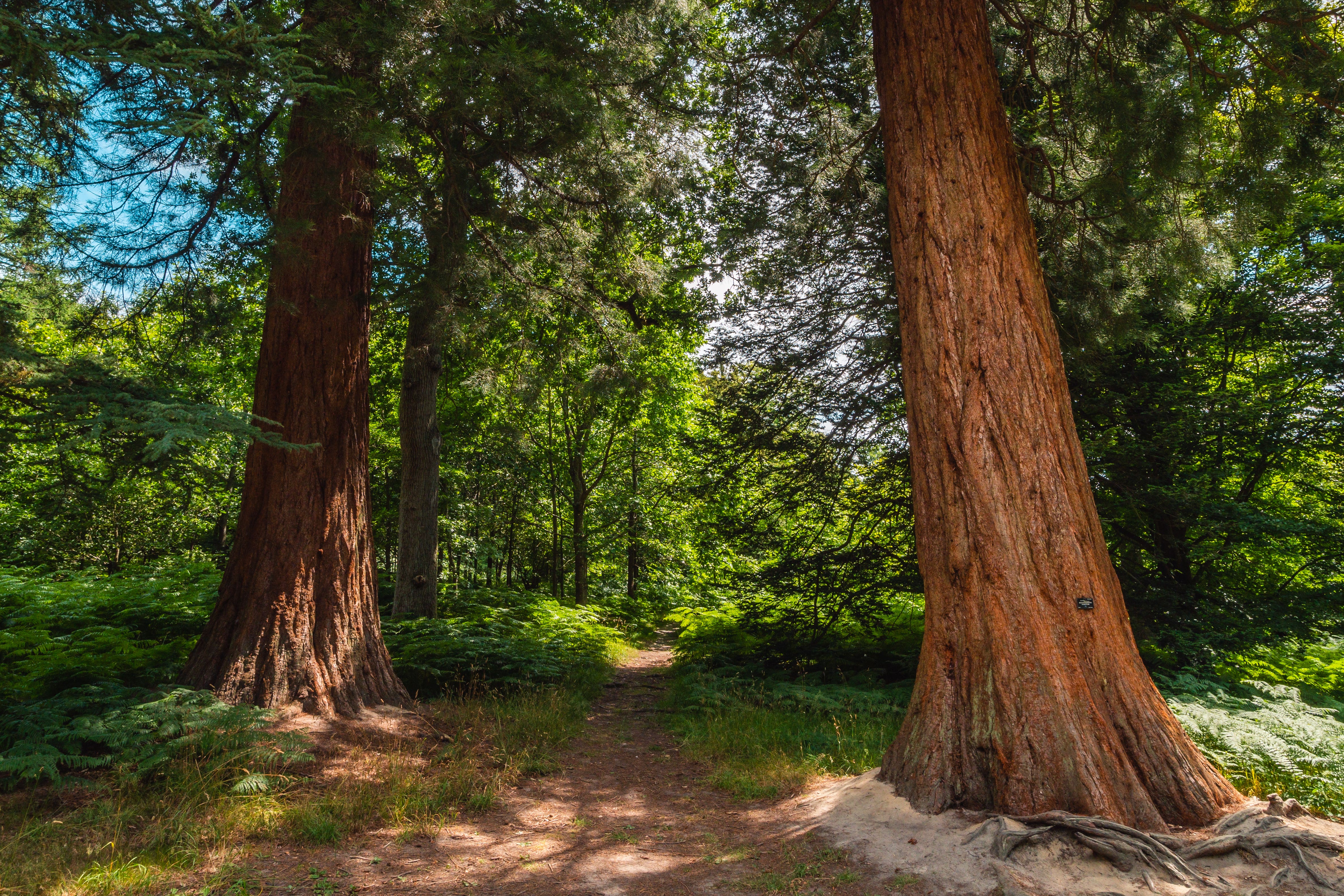Analysis to ‘weigh’ giant sequoias shows they are well adapted to growing in UK
Trees grow at similar rates as in their native California home and can capture large amounts of carbon.

Your support helps us to tell the story
From reproductive rights to climate change to Big Tech, The Independent is on the ground when the story is developing. Whether it's investigating the financials of Elon Musk's pro-Trump PAC or producing our latest documentary, 'The A Word', which shines a light on the American women fighting for reproductive rights, we know how important it is to parse out the facts from the messaging.
At such a critical moment in US history, we need reporters on the ground. Your donation allows us to keep sending journalists to speak to both sides of the story.
The Independent is trusted by Americans across the entire political spectrum. And unlike many other quality news outlets, we choose not to lock Americans out of our reporting and analysis with paywalls. We believe quality journalism should be available to everyone, paid for by those who can afford it.
Your support makes all the difference.Research to “weigh” giant sequoia trees growing in the British landscape has revealed the North American natives are well adapted to the UK.
The study shows that the enormous trees grow at similar rates to those in their native California range, despite the differences in the ecological situation, and can capture large amounts of carbon when they grow in Britain.
There are an estimated half a million giant sequoia and closely related coastal redwoods in the UK, while in the wild giant sequoias are endangered with just 80,000 still growing in California’s Sierra Nevada mountains.
Here the giant sequoias, which can grow up to 90m (nearly 300ft) tall over their 3,000-year lives, are already some of the country’s largest trees, despite only being introduced in the mid-19th century.
They were first imported to the UK as seeds and seedlings in 1853, and their rarity and novelty meant they commanded premium prices.
The researchers said they became a symbol of wealth in Victorian Britain, planted at the entrance to large houses and estates, and in avenues, churchyards and parks.
Now with recent interest in planting more redwoods, as a result of their public appeal and potential for storing carbon, the team said it was important to know more about their growth and carbon uptake in the UK.
So researchers from University College London (UCL), with colleagues from the Royal Botanic Gardens, Kew, set out to analyse the growth rate and resilience of giant sequoias in the British climate – which is milder and with a wider range of rainfall than in their native ecosystem – for the first time.
Using the latest laser scanning technology has allowed us to accurately ‘weigh’ these massive trees without having to cut them down
Because of their history, many of the specimens’ ages are known, helping scientists to calculate their growth rate.
The team compiled the first dedicated map of giant sequoias in the UK, mapping nearly 5,000 known trees.
They analysed 97 individual trees at three sites, from an avenue at Benmore Botanical Garden, Dunoon, Scotland, at Kew’s Wakehurst Place in West Sussex, and along a path in mixed woodland in Havering Country Park, Essex.
They used 3D terrestrial laser scanning to make detailed structural measurements of the trees to assess their above-ground biomass.
Co-author Dr Phil Wilkes, formerly of UCL and now at Royal Botanic Gardens, Kew, said: “Using the latest laser scanning technology has allowed us to accurately ‘weigh’ these massive trees without having to cut them down.
“This means we can measure many more trees as well as revisit them in the future.”
The analysis found the trees at Kew’s Wakehurst Place and Benmore grew at similar rates to US counterparts, although the Scottish trees were slightly taller and slimmer than those in West Sussex.
The trees at Havering grew more slowly, which was likely due to lower rainfall and competition in the dense woodland, the researchers said.
The study found that UK grown sequoias can lock up carbon at a rate of 85kg a year, varying with climate, management and age.
The tallest tree they found measured 54.87 metres (about 180ft), smaller than their US counterparts, in part due to the UK specimens’ youth.
The study’s lead author Ross Holland, formerly a master’s student at UCL and now at East Point Geo, said: “Giant sequoias are some of the most massive organisms on Earth and in their native range make up some of the most carbon dense forests in the world due to their great age.
“We found that UK redwoods are well adapted to the UK and able to capture a large amount of carbon dioxide.
“We hope that these findings can help guide decisions on future tree planting and management.”
The researchers stress that the best way to tackle climate change is to cut carbon emissions from burning fossil fuels, and how trees would fare in the UK’s changing climate over the next 160 years and more needs to be taken into consideration when planting.
The research was published in the journal Royal Society Open Science.